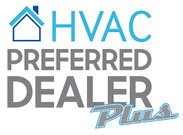Construction Permits
New HVAC installation / Changeout
What happens if you do not pull permits?
Willful or deliberate disregard and violation of the building laws, including the California Building Code, and local permit requirements constitutes a cause for disciplinary action from the Contractors State License Board working in conjunction with the local building department. This action may consist of fines up to $5,000 per violation or suspension/revocation of a contractor’s license.
When must you pull permits?
A written construction permit shall be obtained from the enforcement agency prior to the erection, construction, reconstruction, installation, relocation, or alteration of any mechanical system, except as permitted in Appendix Chapter 1, Section 112.2 of the 2007 California Mechanical Code. Projects requiring permits include, but are not limited to:
- New HVAC installation
- HVAC Changeout
- Replacement of furnace, coil, FAU, or condenser
- Relocation of an existing HVAC unit
- Adding or replacing more than 40ft ducting
What are energy efficiency standards related to title 24?
Requirements Include:
- Heating equipment must have a minimum 78% AFUE (Exception: Wall & floor furnaces; room heaters).
- Central air conditioners & heat pumps less than 65,000 Btu/hr must have a minimum 13 SEER.
- Newly installed or replaced ducts must have a minimum insulation value of R-4.2.
- A setback type thermostat (24 hr clock with four set points) is required for all alterations and newly installed
- New or replacement ducts must meet the mandatory requirements of Section 150(m):
- All joints and openings in the in the HVAC system must be sealed.
- Only UL 181, UL 181A, or UL 181B approved tapes or mastic shall be used to seal duct openings.
- Connections of metals ducts and the inner core of flex ducts shall be mechanically fastened. Flex ducts must be connected using a metal sleeve/coupling.
- Flex ducts that are suspended must be supported every 4ft. max for horizontal runs with no more than 2″ of sag between supports and 6 ft. max for vertical runs
When is HERS verification required?
A HERS rater is a special inspector for the building department. The building inspector may also request to be on site to witness testing by the contractor and/or HERS rater. The installer picks one of the three options on the CF-1R-ALT-HVAC Form that describe the work being conducted. Each option lists the forms required to be at the job site for final.
- CF-6R Forms shall be completed and submitted by the installing contractor for final inspection.*
- CF-4R Forms shall be completed, registered with an approved HERS Provider (cannot be completed by hand), and submitted by the HERS Rater for final inspection effective January 1, 2010.
Description of the HERS test
Cooling Coil Airflow (CCA) – When a refrigerant charge test is required the system must first be tested to move a minimum 300 CFM per ton of cooling. An accrete charge cannot be conducted with air flows lower than 300 CFM per ton of cooling. Air flows can usually be increased by adding a larger return duct and grill or a second return duct and grill.
Duct Test – The new or current duct work must pass the minimum required leakage rate. All duct work must be sealed and air tight.
Refrigerant Charge (RC) – The installer is required to verify the charge is correct. If the outside temperature is below 55 degrees then the weigh in method must be used by the installer. When the weigh in method is used the HERS rater must retest when the temperature is 55 and above using the standard testing protocol in RA3. A charge indicator display or (CID) can be used in place of conducting an RC. The purpose of the CID is to provide real-time information to the building occupant about the status of the system refrigerant charge, metering device and cooling coil airflow. Manufacturers are currently developing this device.
Temperature Measurement Access Holes (TMAH)- Installer must drill and mark holes to measure temperature split.
NOTE: The CF-6R-MECH-04 is required for all HVAC alterations.
* For final inspection ALL compliance forms (CF-1Rs, CF-6Rs, and CF-4Rs) shall be registered with an approved HERS Provider for building permit applications submitted on or after October 1, 2010.






